AGs ask Supreme Court to overrule restrictions on enforcing homeless camping bans
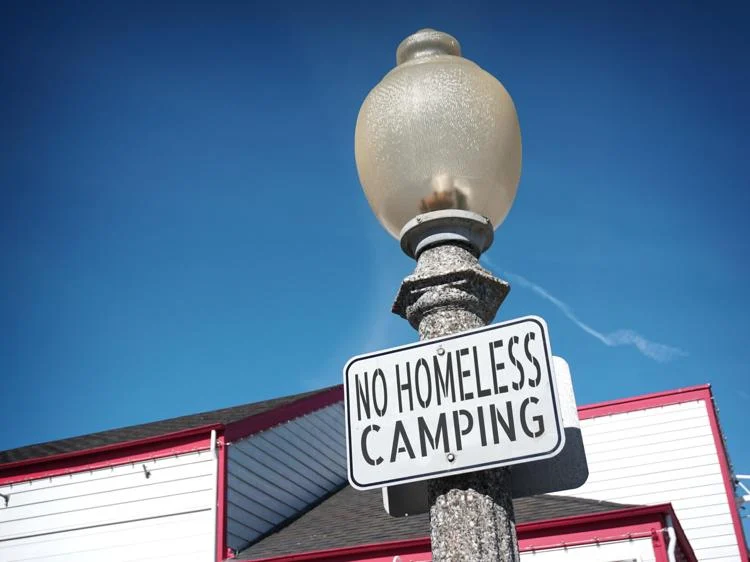
A group of 20 attorneys general want the U.S. Supreme Court to overrule a lower court’s restrictions on local governments enforcing homeless camping bans. In their petition regarding Johnson v. City of Grants Pass, the attorneys general wrote that the 9th Circuit Court of Appeals was wrong to prohibit state and local governments from enforcing laws that bar public spaces from being used as homeless encampments. “The Constitution nowhere strips States of the power to regulate use of public spaces,” the attorneys general wrote. “It empowers States and guarantees an inviolable sovereignty meant to address local issues like homelessness.” Meanwhile, the attorneys general said the 9th Circuit “relied on this Court’s ‘evolving standards of decency’ jurisprudence,” something they said “lacks textual, historical, or structural support.” “The Court should put that troublesome jurisprudence to bed once and for all,” they added. In 2018, the 9th Circuit ruled that the Eighth Amendment allows for the right to sleep and camp in public spaces. Earlier this year, the appeals court held that the amendment also prevents fines for people “engaging in involuntary, unavoidable life-sustaining acts.” However, the attorneys general argue that cities – especially those across the western U.S. – are having a difficult time combating homelessness because of the ruling. “When it comes to public encampments, States have significant land interests,” the attorneys general said. “States regulate public encampments to protect natural resources, prevent wildfires, preserve the value of recreation, and maintain an area’s dignity and public value. The petition was filed by attorneys general from Alabama, Alaska, Arkansas, Florida, Idaho, Indiana, Kansas, Louisiana, Mississippi, Missouri, Montana, Nebraska, North Dakota, Oklahoma, South Carolina, South Dakota, Texas, Utah, Virginia and West Virginia. Democratic California Gov. Gavin Newsom also submitted a brief for the Supreme Court to review the case. Republished with the permission of The Center Square.
U.S. Supreme Court denies bid by Alabama lawmakers in redistricting fight
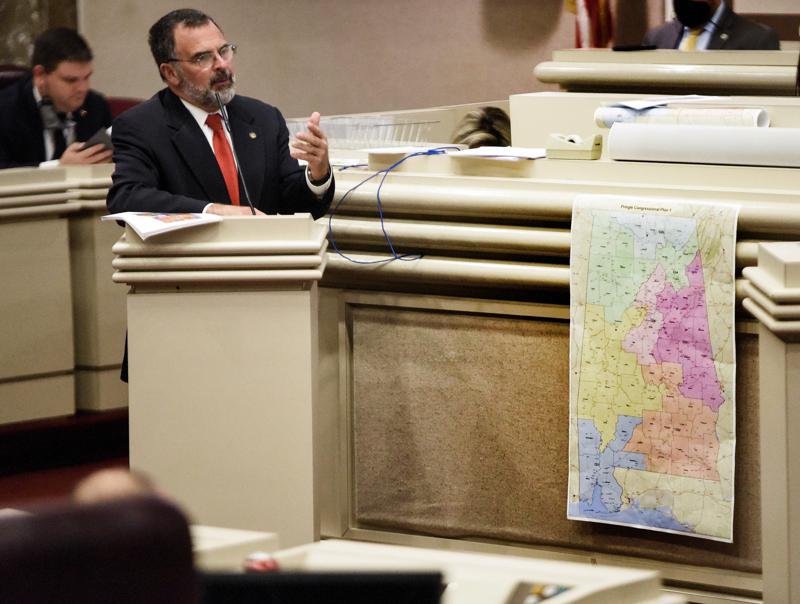
The U.S. Supreme Court won’t intervene in the fight over Alabama’s congressional maps. On Tuesday, the court denied a bid by state lawmakers for another look at the fight about the state having a second Black majority congressional district. Several groups sued to overturn the state’s 2021 congressional maps, which had one of seven districts majority Black. It was a last-ditch effort by the state to keep maps drawn during July’s special session and rejected by a three-judge federal panel earlier this month. The U.S. District Court will pick between three congressional maps drawn by a court-appointed special master and a cartographer. All three will create Black-majority districts and be a likely pickup for Democrats. “This is a victory for all Americans, particularly voters of color, who have fought tirelessly for equal representation as citizens of this nation,” former Attorney General Eric Holder said in a release. “Even with this court’s landmark decision to uphold Section 2 of the Voting Rights Act, Alabama Republicans have defied court orders at every turn by refusing to enact a map that gives Black Alabamians the opportunity to elect a candidate of their choice in two districts. “These shameful, odious efforts to diminish the rightful voting power of Black Alabamians have finally been defeated. As a result, we will see more representative maps in places that were once thought to be unreachable in the fight for fairness: Alabama, Louisiana, and Georgia. Justice has prevailed.” On June 8, the U.S. Supreme Court issued a decision in Allen v. Milligan that said Alabama’s previously-drawn map violated the Voting Rights Act and ordered new maps that create an “opportunity district” for minority voters to cast ballots for the candidates of their choice. Republished with the permission of The Center Square.
Supreme Court rules in favor of Black Alabama voters in unexpected defense of Voting Rights Act

The Supreme Court on Thursday issued a surprising 5-4 ruling in favor of Black voters in a congressional redistricting case from Alabama, with two conservative justices joining liberals in rejecting a Republican-led effort to weaken a landmark voting rights law. Chief Justice John Roberts and Justice Brett Kavanaugh joined with the court’s liberals in affirming a lower-court ruling that found a likely violation of the Voting Rights Act in an Alabama congressional map with one majority Black seat out of seven congressional districts in a state where more than one in four residents is Black. The state now will have to draw a new map for next year’s elections. The decision was closely watched for its potential effect on control of the closely divided U.S. House of Representatives. Because of the ruling, Republican-led legislatures in Alabama and Louisiana will have to redraw maps so that they could increase Black representation. The outcome was unexpected in that the court had allowed the challenged Alabama map to be used for the 2022 elections — and in arguments last October, the justices appeared willing to make it harder to challenge redistricting plans as racially discriminatory under the Voting Rights Act of 1965. The chief justice himself suggested last year that he was open to changes in the way courts weigh discrimination claims under the part of the law known as section 2. But on Thursday, Roberts wrote that the court was declining “to recast our section 2 case law as Alabama requests.” Roberts was part of conservative high-court majorities in earlier cases that made it harder for racial minorities to use the Voting Rights Act in ideologically divided rulings in 2013 and 2021. The other four conservative justices dissented Thursday. Justice Clarence Thomas wrote that the decision forces “Alabama to intentionally redraw its longstanding congressional districts so that black voters can control a number of seats roughly proportional to the black share of the State’s population. Section 2 demands no such thing, and, if it did, the Constitution would not permit it.” The Biden administration sided with the Black voters in Alabama. Attorney General Merrick Garland applauded the ruling: “Today’s decision rejects efforts to further erode fundamental voting rights protections, and preserves the principle that in the United States, all eligible voters must be able to exercise their constitutional right to vote free from discrimination based on their race.” Evan Milligan, a Black voter and the lead plaintiff in the case, said the ruling was a victory for democracy and people of color. “We are grateful that the Supreme Court upheld what we knew to be true: that everyone deserves to have their vote matter and their voice heard. Today is a win for democracy and freedom not just in Alabama but across the United States,” Milligan said. The case stems from challenges to Alabama’s seven-district congressional map, which included one district in which Black voters form a large enough majority that they have the power to elect their preferred candidate. The challengers said that one district is not enough, pointing out that overall, Alabama’s population is more than 25% Black. A three-judge court, with two appointees of former President Donald Trump, had little trouble concluding that the plan likely violated the Voting Rights Act by diluting the votes of Black Alabamians. The panel ordered a new map drawn. But the state quickly appealed to the Supreme Court, where five conservative justices prevented the lower-court ruling from going forward. At the same time, the court decided to hear the Alabama case. Louisiana’s congressional map had separately been identified as probably discriminatory by a lower court. That map, too, remained in effect last year and now will have to be redrawn. Partisan politics underlies the case, and in a closely divided House of Representatives, Thursday’s ruling could have a significant effect. Republicans who dominate elective office in Alabama have been resistant to creating a second district with a Democratic-leaning Black majority, or close to one, that could send another Democrat to Congress. The judges found that Alabama concentrated Black voters in one district, while spreading them out among the others to make it much more difficult to elect more than one candidate of their choice. Alabama’s Black population is large enough and geographically compact enough to create a second district, the judges found. Denying discrimination, Alabama argued that the lower court ruling would have forced it to sort voters by race and insisted it was taking a “race-neutral” approach to redistricting. At arguments in October, Justice Ketanji Brown Jackson scoffed at the idea that race could not be part of the equation. Jackson, the court’s first Black woman, said that constitutional amendments passed after the Civil War and the Voting Rights Act a century later were intended to do the same thing, make Black Americans “equal to white citizens.” Republished with the permission of The Associated Press.
High court’s Alabama ruling sparks alarm over voting rights
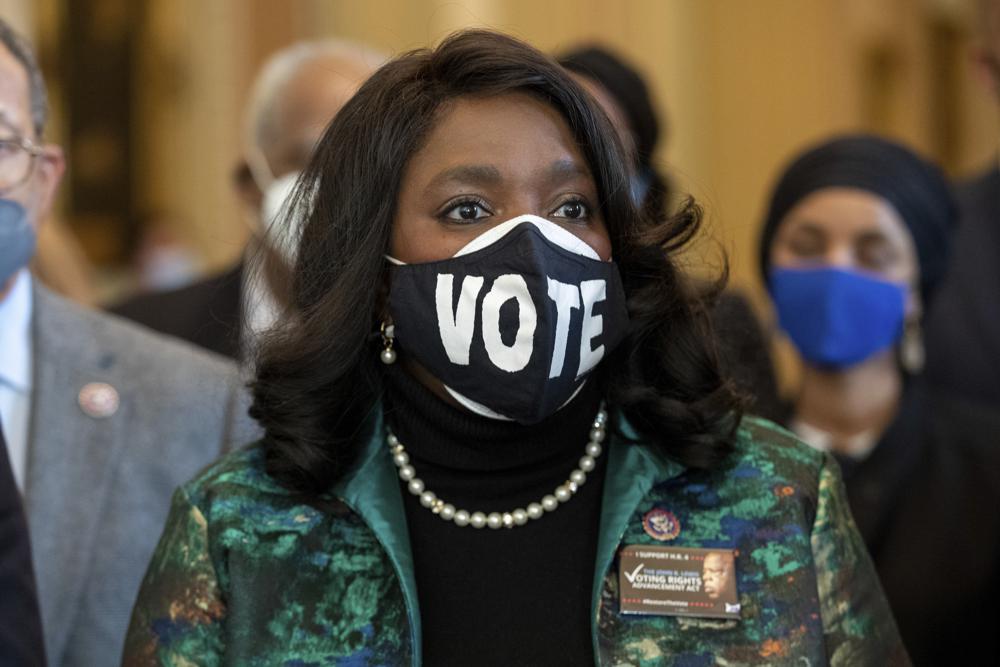
The Supreme Court’s decision to halt efforts to create a second mostly Black congressional district in Alabama for the 2022 election sparked fresh warnings Tuesday that the court is becoming too politicized, eroding the Voting Rights Act and reviving the need for Congress to intervene. The Supreme Court’s conservative majority put on hold a lower court ruling that Alabama must draw new congressional districts to increase Black voting power. Civil rights groups had argued that the state, with its “sordid record” of racial discrimination, drew new maps by “packing” Black voters into one single district and “cracking” Black voters from other districts in ways that dilute their electoral power. Black voters are 26% of Alabama’s electorate. In its 5-4 decision late Monday, the Supreme Court said it would review the case in full, a future legal showdown in the months to come that voting advocates fear could further gut the protections in the landmark Civil Rights-era law. It’s “the latest example of the Supreme Court hacking away at the protections of the voting rights act of 1965,” said Sen. Dick Durbin, D-Ill., chairman of the Judiciary Committee. “Congress must act. We must restore the Voting Rights Act.” The outcome all but ensures Alabama will continue to send mostly white Republicans to Washington after this fall’s midterm elections and applies new pressure on Congress to shore up voter protections after a broader elections bill collapsed last month. And the decision shows the growing power of the high court’s conservative majority as President Joe Biden is under his own pressures to name a liberal nominee to replace retiring Justice Stephen Breyer. Rep. Terri Sewell, the only Black representative from Alabama, said the court’s decision underscores the need for Congress to pass her bill, the John R. Lewis Voting Rights Advancement Act, to update and ensure the law’s historic protections. “Black Alabamians deserve nothing less,” Sewell said in a statement. The case out of Alabama is one of the most important legal tests of the new congressional maps stemming from the 2020 census count. It comes in the aftermath of court decisions that have widely been viewed as chiseling away at race-based protections of the Voting Rights Act. Alabama and other states with a known history of voting rights violations were no longer under federal oversight, or “preclearance,” from the Justice Department for changes to their election practices after the court, in its 2013 Shelby v. Holder decision, struck down the bill’s formula as outdated. As states nationwide adjust their congressional districts to fit population and demographic data, Alabama’s Republican-led Legislature drew up new maps last fall that were immediately challenged by civil rights groups on behalf of Black voters in the state. Late last month, a three-judge lower court, which includes two judges appointed by former President Donald Trump, had ruled that the state had probably violated the federal Voting Rights Act by diluting the political power of Black voters. This finding was rooted, in part, in the fact that the state did not create a second district in which Black voters made up a majority or close to it. Given that more than one person in four in Alabama is Black, the plaintiffs had argued the single Black district is far less than one person, one vote. “Black voters have less opportunity than other Alabamians to elect candidates of their choice to Congress,” the three-judge panel wrote in the 225-page ruling. The lower court gave the Alabama legislature until Friday to come up with a remedial plan. Late Monday, the Supreme Court, after an appeal from Alabama, issued a stay. Justices Brett Kavanaugh and Samuel Alito, part of the conservative majority, said the lower court’s order for a new map came too close to the 2022 election. Chief Justice John Roberts joined his three more liberal colleagues in dissent. “It’s just a really disturbing ruling,” said Sen. Cory Booker, D-N.J., a member of the Judiciary Committee, who called the Supreme Court’s decision “a setback to racial equity, to ideals of one person, one vote.” Rep. Joyce Beatty, D-Ohio, and the chair of the Congressional Black Caucus said the decision “hits at the guts of voting rights.” She told The Associated Press: “We’re afraid of what will happen from Alabama to Texas to Florida and even to the great state of Ohio.” White House Press Secretary Jen Psaki said the court decision exposes the need for Congress to legislate to protect voting rights. The erosion of those rights is “exactly what the Voting Rights Act is in place to prevent.” Critics went beyond assailing the decision at hand to assert that the court has become political. “I know the court likes to say it’s not partisan, that it’s apolitical, but this seems to be a very political decision,” said Democratic Sen. Chris Van Hollen of Maryland. Rep. Hakeem Jeffries, D-N.Y., tweeted that the court majority has “zero legitimacy.” Rep. Barbara Lee, D-Calif., tweeted that the court’s action was “Jim Crow 2.0.” Alabama Republicans welcomed the court’s decision. “It is great news,” said Rep. Mo Brooks, who is running for the GOP nomination for Senate. He called the lower court ruling an effort to “usurp” the decisions made by the state’s legislature. The justices will, at some later date, decide whether the map produced by the state violates the voting rights law, a case that could call into question “decades of this Court’s precedent” about Section 2 of the act, Justice Elena Kagan wrote in dissent. Section 2 prohibits racial and other discrimination in voting procedures. Voting advocates see the arguments ahead as a showdown over voting rights they say are being slowly but methodically altered by the Roberts court. The Supreme Court in the Shelby decision did away with the preclearance formula under Section 5 of the Voting Rights Act. And last summer, the conservative majority in Bronvich vs. the Democratic National Committee upheld voting limits in an Arizona case concerning early ballots that a lower court had found discriminatory under Section 2. With the Alabama case, the court
Alabama leaders respond to Supreme Court redistricting reversal
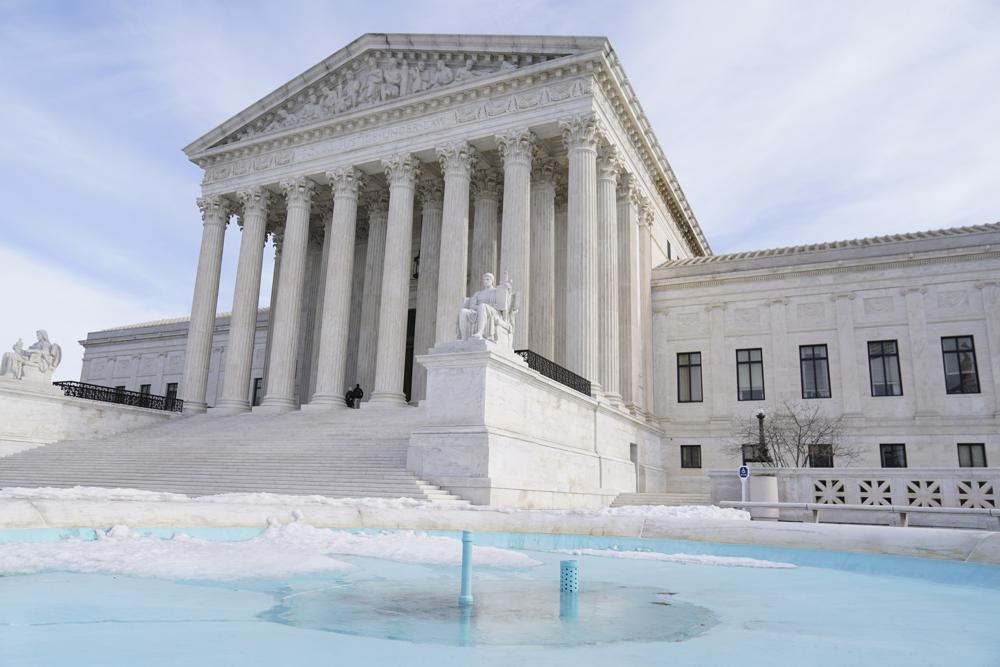
On Monday, the Supreme Court put on hold a lower court ruling that Alabama must draw new congressional districts before the 2022 elections to increase Black voting power. By a 5-4 vote, the court’s action means the upcoming elections will be conducted under the original map. The justices will decide at a later date whether the map produced by the state violates the landmark voting rights law. Alabama leaders are responding to the ruling. Attorney General Steve Marshall declared Monday’s decision a victory. Marshall stated in a press release, “Today, the Supreme Court ensured that such a result will not befall the State this year. We will now have the chance to further brief the case and argue it to the Supreme Court, and we’re confident we will ultimately prevail.” Congressmen Robert Aderholt also applauded the reversal, arguing that the districts were fairly drawn and forcing a change in the congressional maps would have created chaos. Aderholt stated, “I applaud the Supreme Court for this decision. Making wholesale changes to the Congressional maps this late into the 2022 election cycle would have caused chaos, not just for the state’s election officials, but for all Alabama voters. “I’m confident these lines, which were fairly drawn, will stand for this next decade. It is clear that the challenge to these lines is part of a coordinated effort across the nation to challenge Republican-drawn lines. At the same time, we are seeing dramatic gerrymandering in Democrat-led states, like New York, to eliminate Republican districts.” Rep. Terri Sewell expressed disappointment in the ruling. “Today’s Supreme Court order is yet another blow to the fight for fair Black political representation that is at the heart of the Voting Rights Act of 1965 (VRA). The ruling allows the votes of Black Alabamians to be diluted and further undermines Section 2 of the VRA,” Sewell stated in a press release. “This order underscores the urgent need for Congress to enact my bill—the John R. Lewis Voting Rights Advancement Act—which would restore much-needed federal oversight to ensure that minority voters are fairly represented. Black Alabamians deserve nothing less.”
Justices weigh Alabama’s bid to stop redistricting order
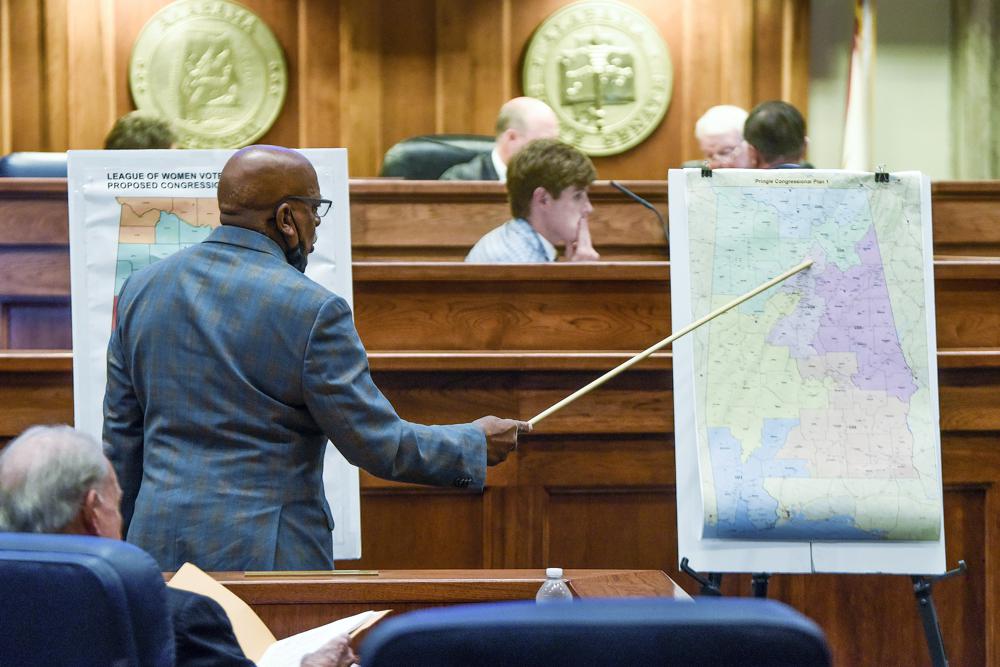
The U.S. Supreme Court is weighing Alabama’s request to freeze a court order requiring the state to draw new congressional lines and create a second district with a significant number of Black voters. Alabama has asked the court to halt an injunction issued by a three-judge panel blocking the use of the current map after the panel found it likely violates the Voting Rights Act. The Alabama attorney general argued the ruling will throw 2022 elections into chaos and require the state to put race above other redistricting criteria. But lawyers for people and organizations that brought the initial lawsuit dispute that and argue the current lines — similar to those in use since the 1990s — do not reflect a state that has grown more racially diverse. “This is very much a textbook case of a Voting Rights Act violation,” said NAACP Legal Defense Fund senior counsel Deuel Ross, whose organization represented the plaintiffs in the case. The three-judge panel last month found Alabama’s map, drawn by the GOP-dominated Alabama Legislature, likely violates the Voting Rights Act because, “Black voters have less opportunity than other Alabamians to elect candidates of their choice to Congress.” The decision cited Section 2 of the Voting Rights Act which prohibits racial discrimination in election procedures. Alabama’s congressional delegation has for years consisted of one Black representative elected from a heavily Black district and six white representatives elected from heavily white districts. The judges added that any “remedial plan will need to include two districts in which Black voters either comprise a voting-age majority or something quite close to it.” U.S. Census numbers show the state has grown racially more diverse since 1990. Black people make up about 27% of the state’s population while white people make up 63% of the population. “We think that Alabama has an obligation to draw fair maps that are reflective of the state’s very rich history of diversity, not just racial diversity, but diversity in terms of representation for everyone,” Ross said. The Alabama attorney general argues the ruling will improperly require states to prioritize race over other redistricting criteria. “The court-ordered redraw marks a radical change from decades of Alabama’s congressional plans. It will result in a map that can be drawn only by placing race first above race-neutral districting criteria, sorting and splitting voters across the State on the basis of race alone,” Alabama Attorney General Steve Marshall wrote in the state’s appeal to the U.S. Supreme Court. Fourteen conservative-led states signed on to a brief in support of Alabama, arguing that the ruling and “absence of clarity no doubt means litigation will ensue across the country over new maps.” Louisiana Attorney General Jeff Landry filed a brief along with attorneys general from Arizona, Arkansas, Georgia, Indiana, Kentucky, Mississippi, Missouri, Montana, Oklahoma, South Carolina, Texas, Utah, and West Virginia. Lawyers for plaintiffs argued Alabama is misrepresenting the ruling as prioritizing race instead of assessing whether an additional majority-Black district could be created consistent with compactness and traditional districting principles. It is unclear when the court will rule but Alabama faces a looming deadline to get new maps in place unless justices intervene. The three-judge panel pushed back the congressional candidate qualification deadline with political parties from Friday until February 11 to allow the Legislature the opportunity to enact a remedial plan. Alabama lawmakers appear to be waiting on the U.S. Supreme Court’s decision. The legislative reapportionment committee has not met since the ruling of the three-judge panel, some members said. “The attorney general has filed motions of stay and of appeal with the Supreme Court and we’re just going to need to see what the outcomes are, Senate President Pro Tem Greg Reed said. The three judges that issued the unanimous ruling consisted of one judge appointed by former President Bill Clinton — Senior U.S. Circuit Judge Stanley Marcus — and two judges appointed by former President Donald Trump — U.S. District Judge Anna Manasco and U.S. District Judge Terry Moorer. Evan Milligan, a Montgomery resident and the lead plaintiff in the lawsuit, said Alabama likely would have lost a congressional seat if not for the population growth of minority groups, including people born in other countries. “To produce maps that undercount the voting strength of the very population that’s contributing to the ability of the state to even have seven congressional districts is even more indefensible to me,” Milligan said. Republished with the permission of the Associated Press.
Alabama appeals to Supreme Court in redistricting fight
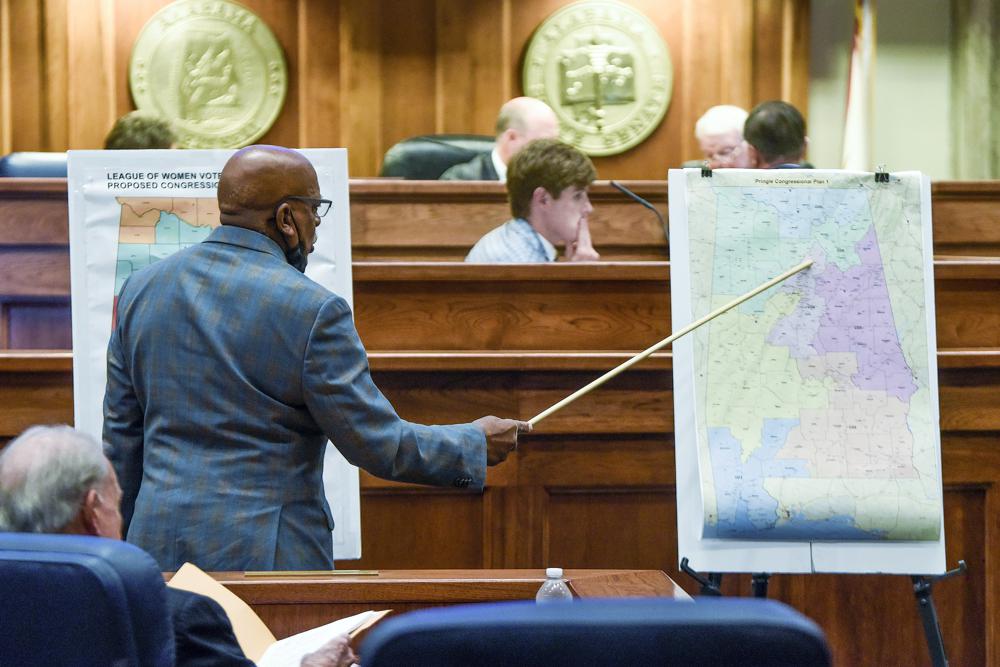
Alabama on Friday asked the U.S. Supreme Court to place a hold on a ruling that will require the state to draw new congressional districts, Lawyers for the state asked the justices to stay a preliminary injunction issued by a three-judge panel on Monday. The injunction blocks the state from using current congressional districts in the upcoming elections. The three judges had ruled Alabama’s current map likely violates the Voting Rights Act and that the state should have an additional district with a significant number of Black voters. In the emergency filing, lawyers for the state argued that the injunction will throw state elections into chaos and require the state to draw districts based primarily on race instead of other factors. “Without this Court’s intervention, Alabama’s only choices are effectively no choices at all: a state-drawn racially gerrymandered map or a court-drawn racially gerrymandered map,” lawyers for the state wrote. “Moreover, this overhaul of Alabama’s congressional map at this late hour would require the last-minute reassignment of hundreds of thousands of voters to new districts and could force candidates and groups seeking ballot access to obtain thousands of new signatures.” Facing a tight timeline, Alabama asked the court to issue an administrative stay followed by a stay or an injunction pending appeal. The state’s qualifying deadline for political candidates was Friday, but the three-judge panel extended the deadline until February 11 for congressional candidates. Alabama is currently represented by one Black Democrat elected from the state’s only majority-Black district and six white Republicans elected from heavily white districts. About 27% of the state’s population is Black. The three-judge panel wrote Monday that, “Black voters have less opportunity than other Alabamians to elect candidates of their choice to Congress” under Alabama’s current map. The judges wrote that any remedial plan “will need to include two districts in which Black voters either comprise a voting-age majority or something quite close to it.” Republished with the permission of the Associated Press.
Matthew Reeves executed for 1996 killing after Supreme Court clears way

Alabama executed an inmate by lethal injection for a 1996 murder on Thursday after a divided U.S. Supreme Court sided with the state and rejected defense claims the man had an intellectual disability that cost him a chance to choose a less “torturous,” yet untried, execution method. Matthew Reeves, 43, was put to death at Holman Prison after the court lifted a lower court order that had prevented corrections workers from executing the prisoner. He was pronounced dead at 9:24 p.m. CST, state Attorney General Steve Marshall said in a statement. Reeves was convicted of killing Willie Johnson Jr., a driver who gave him a ride in 1996. Evidence showed Reeves went to a party afterward and celebrated the killing. The inmate had no last words. After craning his neck to look around a few times, Reeves grimaced and looked at his left arm toward an intravenous line. With his eyes closed and mouth slightly agape, Reeves’ abdomen moved repeatedly before he grew still.ADVERTISEMENT Gov. Kay Ivey, in a statement, said Johnson was “a good Samaritan lending a helping hand” who was brutally murdered. Reeves’ death sentence “is fair, and tonight, justice was rightfully served,” she added. Prison officials said some of Johnson’s family witnessed the execution. In a written statement, they said: “After 26 years justice (has) finally been served. Our family can now have some closure.” Reeves was convicted of capital murder for the slaying of Johnson, who died from a shotgun blast to the neck during a robbery in Selma on Nov. 27, 1996. He was killed after picking up Reeves and others on the side of a rural highway. After the dying man was robbed of $360, Reeves, then 18, went to a party where he danced and mimicked Johnson’s death convulsions, authorities said. A witness said Reeves’ hands were still stained with blood at the celebration, a court ruling said. While courts have upheld Reeves’ conviction, the last-minute fight by his lawyers seeking to stop the execution involved his intellect, his rights under federal disability law, and how the state planned to kill him. The Supreme Court on Thursday evening tossed out a decision by the 11th U.S. Circuit Court of Appeals, which had ruled Wednesday that a district judge didn’t abuse his discretion in ruling that the state couldn’t execute Reeves by any method other than nitrogen hypoxia, which has never been used. Reeves’ attorneys criticized the Supreme Court’s failure to explain its decision to let the execution proceed. “The immense authority of the Supreme Court should be used to protect its citizens, not to strip them of their rights without explanation,” they said. In 2018, Alabama death row inmates had a chance to sign a form choosing either lethal injection or nitrogen hypoxia as an execution method after legislators approved the use of nitrogen. But Reeves was among the inmates who didn’t fill out the form stating a preference. Suing under the American With Disabilities Act, Reeves claimed he had intellectual disabilities that prevented him from understanding the form offering him the chance to choose nitrogen hypoxia — a method never used in the U.S. — over lethal injection, which the inmate’s lawyers called “torturous.” Reeves also claimed the state failed to help him understand the form. But the state argued he wasn’t so disabled that he couldn’t understand the choice. It was a divided court that let the execution proceed. Justice Amy Coney Barrett said she would deny the state’s request, while Justice Stephen Breyer, who just announced his retirement, and Justice Sonia Sotomayor joined with Justice Elena Kagan in a dissent that said the execution shouldn’t occur. The state had previously asked the 11th U.S. Circuit Court of Appeals to lift a lower court injunction and allow the execution, but the panel on Wednesday had refused. Alabama then appealed, sending the case to the nation’s highest court. Alabama switched from the electric chair to lethal injection after 2002, and in 2018 legislators approved the use of another method, nitrogen hypoxia, amid defense challenges to injections and shortages of chemicals needed for the procedure. The new method would cause death by replacing oxygen that the inmate breathes with nitrogen. A poor reader and intellectually disabled, Reeves wasn’t capable of making such a decision without assistance that should have been provided under the American With Disabilities Act, his lawyers argued. A prison worker who gave Reeves a form didn’t offer aid to help him understand, they said. With Reeves contending he would have chosen nitrogen hypoxia over a “torturous” lethal injection had he comprehended the form, the defense filed suit asking a court to halt the lethal injection. U.S. District Judge R. Austin Huffaker, Jr. blocked execution plans, ruling that Reeves had a good chance of winning the claim under the disabilities law. A defense expert concluded Reeves had a first-grade reading level and the language competency of someone as young as 4, but the state disagreed that Reeves had a disability that would prevent him from understanding his options. An Alabama inmate who was put to death by lethal injection last year, Willie B. Smith, unsuccessfully raised claims about being intellectually unable to make the choice for nitrogen hypoxia. Stavros Lambrinidis, the European Union ambassador to the U.S., had sent a letter both condemning Johnson’s killing and asking the governor Ivey to block the execution.
Supreme Court won’t speed challenge to Texas abortion limits
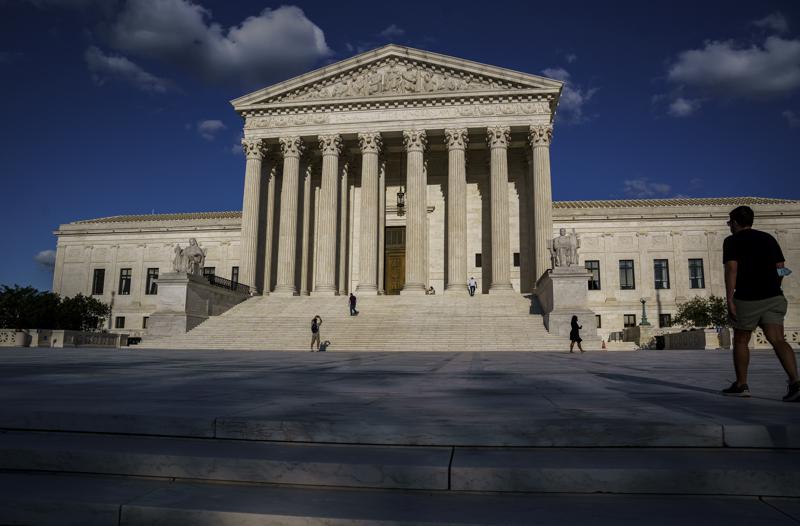
In the latest setback for abortion rights in Texas, the Supreme Court on Thursday refused to speed up the ongoing court case over the state’s ban on most abortions. Over dissents from the three liberal justices, the court declined to order a federal appeals court to return the case to a federal judge who had temporarily blocked the law’s enforcement. The court offered no explanation for its action. The Texas ban is thus likely to remain in effect for the foreseeable future, following a decision by the 5th U.S. Circuit Court of Appeals in New Orleans to send the case to the Texas Supreme Court, which is entirely controlled by Republican justices and does not have to act immediately. Abortion providers had asked the high court to countermand the appellate order, which they said in court papers has no purpose other than to delay legal proceedings and prevent clinics from offering abortions beyond around six weeks of pregnancy. The law has devastated abortion care in Texas, Justice Sonia Sotomayor wrote. “Instead of stopping a Fifth Circuit panel from indulging Texas’ newest delay tactics, the Court allows the State yet again to extend the deprivation of the federal constitutional rights of its citizens through procedural manipulation,” Sotomayor wrote, joined by Justices Stephen Breyer and Elena Kagan. “The Court may look the other way, but I cannot.” Chief Justice John Roberts joined the three liberals in December in a dissent that called for allowing a broader challenge to the law and a quick return to the lower federal court. Roberts did not note his position on Thursday. Clinics fear that their challenge to the law might not be resolved before the justices rule in a Mississippi case that could roll back abortion rights across the country. That decision, which could overrule the landmark Roe v. Wade case from 1973, is expected by late June. The Texas law that bans abortion once cardiac activity is detected — usually around six weeks, before some women know they are pregnant — has been in effect since September. Last month, the high court kept the law in place and allowed only a narrow challenge against the restrictions to proceed. The providers thought their best chance for a favorable outcome was before U.S. District Judge Robert Pitman in Austin. Pitman issued an order in October blocking the law, though the appeals court put his ruling on hold just a couple of days later. Republished with the permission of the Associated Press.
Supreme Court halts COVID-19 vaccine rule for U.S. businesses

The Supreme Court has stopped a major push by the Biden administration to boost the nation’s COVID-19 vaccination rate, a requirement that employees at large businesses get a vaccine or test regularly and wear a mask on the job. At the same time, the court is allowing the administration to proceed with a vaccine mandate for most health care workers in the U.S. The court’s orders Thursday came during a spike in coronavirus cases caused by the omicron variant. The court’s conservative majority concluded the administration overstepped its authority by seeking to impose the Occupational Safety and Health Administration’s vaccine-or-test rule on U.S. businesses with at least 100 employees. More than 80 million people would have been affected, and OSHA had estimated that the rule would save 6,500 lives and prevent 250,000 hospitalizations over six months. “OSHA has never before imposed such a mandate. Nor has Congress. Indeed, although Congress has enacted significant legislation addressing the COVID–19 pandemic, it has declined to enact any measure similar to what OSHA has promulgated here,” the conservatives wrote in an unsigned opinion. In dissent, the court’s three liberals argued that it was the court that was overreaching by substituting its judgment for that of health experts. “Acting outside of its competence and without legal basis, the Court displaces the judgments of the Government officials given the responsibility to respond to workplace health emergencies,” Justices Stephen Breyer, Elena Kagan, and Sonia Sotomayor wrote in a joint dissent. President Joe Biden said he was “disappointed that the Supreme Court has chosen to block common-sense life-saving requirements for employees at large businesses that were grounded squarely in both science and the law.” Biden called on businesses to institute their own vaccination requirements, noting that a third of Fortune 100 companies already have done so. When crafting the OSHA rule, White House officials always anticipated legal challenges — and privately, some harbored doubts that it could withstand them. The administration nonetheless still views the rule as a success at already driving millions of people to get vaccinated and encouraging private businesses to implement their own requirements that are unaffected by the legal challenge. The OSHA regulation had initially been blocked by a federal appeals court in New Orleans, then allowed to take effect by a federal appellate panel in Cincinnati. Both rules had been challenged by Republican-led states. In addition, business groups attacked the OSHA emergency regulation as too expensive and likely to cause workers to leave their jobs at a time when finding new employees already is difficult. The National Retail Federation, the nation’s largest retail trade group, called the Supreme Court’s decision “a significant victory for employers.” The vaccine mandate that the court will allow to be enforced nationwide scraped by on a 5-4 vote, with Chief Justice John Roberts and Justice Brett Kavanaugh joining the liberals to form a majority. The mandate covers virtually all health care workers in the country, applying to providers that receive federal Medicare or Medicaid funding. It affects 10.4 million workers at 76,000 health care facilities as well as home health care providers. The rule has medical and religious exemptions. Biden said that decision by the court “will save lives.” In an unsigned opinion, the court wrote: “The challenges posed by a global pandemic do not allow a federal agency to exercise power that Congress has not conferred upon it. At the same time, such unprecedented circumstances provide no grounds for limiting the exercise of authorities the agency has long been recognized to have.” It said the “latter principle governs” in the healthcare arena. Justice Clarence Thomas wrote in dissent that the case was about whether the administration has the authority “to force healthcare workers, by coercing their employers, to undergo a medical procedure they do not want and cannot undo.” He said the administration hadn’t shown convincingly that Congress gave it that authority. Justices Samuel Alito, Neil Gorsuch, and Amy Coney Barrett signed onto Thomas’ opinion. Alito wrote a separate dissent that the other three conservatives also joined. Decisions by federal appeals courts in New Orleans and St. Louis had blocked the mandate in about half the states. The administration already was taking steps to enforce it elsewhere. More than 208 million Americans, 62.7% of the population, are fully vaccinated, and more than a third of those have received booster shots, according to the federal Centers for Disease Control and Prevention. All nine justices have gotten booster shots. The courthouse remains closed to the public, and lawyers and reporters are asked for negative test results before being allowed inside the courtroom for arguments, though vaccinations are not required. The justices heard arguments on the challenges last week. Their questions then hinted at the split verdict that they issued Thursday. A separate vaccine mandate for federal contractors, on hold after lower courts blocked it, has not been considered by the Supreme Court. Republished with the permission of the Associated Press.
U.S. Supreme Court to hear challenges to vaccine mandates in early January
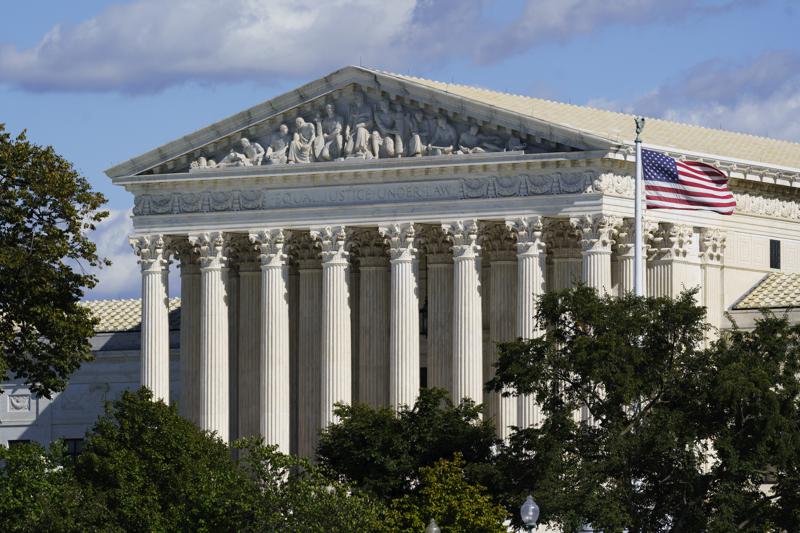
The U.S. Supreme Court early next month will hear challenges to two of President Joe Biden’s worker-related COVID-19 vaccine mandates. The nation’s highest court agreed Wednesday to hear oral arguments on January 7 on the Biden administration’s separate executive branch mandates that most health care workers and those employed by private businesses with 100 workers or more be fully vaccinated against COVID-19, be tested regularly, or face losing their jobs. Dozens of lawsuits were filed challenging the constitutionality of Biden’s vaccine mandates, which he put in place without Congressional approval. The private sector mandate, which would impact more than 80 million workers in the U.S., initially was ordered halted by the 5th Circuit Court of Appeals in New Orleans, which cited “grave” constitutional concerns over potential executive branch overreach. After more than a dozen lawsuits against the mandate on private businesses were consolidated and sent to the 6th Circuit in Cincinnati, the Ohio-based federal court reinstated it last week. The reinstatement ruling was immediately appealed to the Supreme Court by multiple plaintiffs across the country. Biden also mandated that the employees of all health care companies that receive Medicaid and Medicare dollars be vaccinated against the coronavirus. This mandate affects more than 2 million American workers. Conservative groups and free-market advocates argue the president doesn’t have the authority to unilaterally make health care decisions for individual American citizens. The Biden administration has said it’s confident it does have that authority. The mandates are set to take effect January 4, three days before oral arguments in the cases. Because of the timing of the effective date of the mandates, the Supreme Court is expected to issue a decision quickly. By Dan McCaleb Republished with the permission of The Center Square.
Mississippi loses Supreme Court water fight with Tennessee

A unanimous Supreme Court on Monday rejected a claim that the Memphis, Tennessee, area has been taking water that belongs to Mississippi from an underground aquifer that sits beneath parts of both states. The high court’s first decision of the term came in a case argued in October, deflating expectations that the justices would resolve the issue of whether Texas’ ban on most abortions could be challenged in federal court. Two cases on the Texas issue were argued on November 1 under an accelerated process that the court has previously used only rarely and in some of its most notable decisions, including the Bush v. Gore case that settled the 2000 presidential election. But those cases remain unsettled. Instead, Chief Justice John Roberts wrote for the court in an interstate water dispute that reaches back to 2005. The Supreme Court has long embraced the concept of a fair share in state fights over rivers and streams, a legal doctrine known as equitable apportionment. Mississippi, though, “contends that it has sovereign ownership of all groundwater beneath its surface, so equitable apportionment ought not apply. We see things differently,” Roberts wrote. Although the water source at issue, in this case, is water from hundreds of feet below the surface, Roberts wrote that “we see no basis for a different result.” Tennessee Attorney General Herbert H. Slatery III praised the decision. “We now have some finality. It’s a clear victory for Tennessee on all issues, and for all states who share underground water resources,” Slatery said in a statement. Republished with the permission of the Associated Press.


